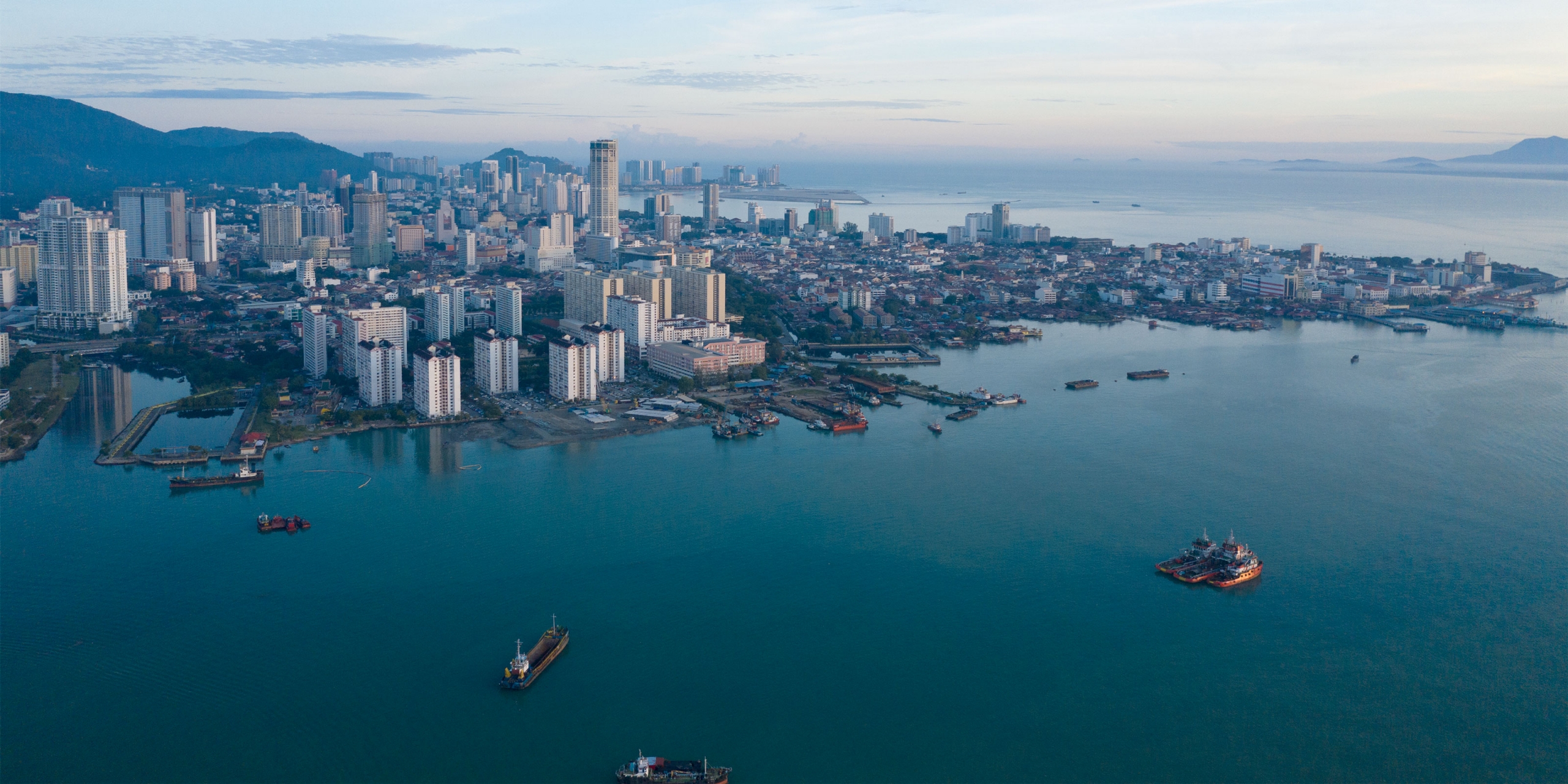All the treated water that is supplied to all Penang water consumers in 2020 originated from rainforest water catchment areas that collect rain water which then flows into river basins. Due to climate change, high dependency on fresh water from river basins places Penang at a disadvantage in terms of achieving a high level of water supply security in the 21st Century.


Since 1973, Penang has been dependent on Sungai Muda (which flows through Seberang Prai) as its one and only major raw water resource. In 2020, more than 80% of the raw water that PBAPP abstracts daily to produce treated (or potable) water for Penang comes from Sungai Muda. This river is a “shared raw water resource”. Kedah also abstracts raw water from this river, upstream of Penang, via 13 water supply intakes. In addition, there are 6 irrigation intakes upstream of PBAPP’s Lahar Tiang Intake.

As at May 2021, logging is being carried out in the Greater Ulu Muda Forest Complex (Ulu Muda), which encompasses 163,000 hectares of rainforests in Kedah. The Kedah State Government is also reportedly seeking to exploit Ulu Muda as a site for “rare earth elements” (REE mining). The Penang State Government and PBAPP have repeatedly called on the Federal Government to compensate Kedah for conserving and protecting the Ulu Muda Water Basin (UMWB) as a Northern Corridor Economic Region (NCER) raw water resource.

In 2011, when Penang migrated to the National Water Services Re-structuring Initiative (NWSIRI), the Federal Government agreed to fund and implement “future raw water resource projects” for Penang. In that same year, Penang proposed the concept of the Sungai Perak Raw Water Transfer Scheme (SPRWTS) to the Federal Government. The SPRWTS was conceptualised for the benefit of North Perak and Penang. It has the potential of meeting both states’ raw water needs until 2050. As at May 2021, 10 years have passed. The Federal Government has not implemented the SPRWTS.

Since 2019, climate change has affected rainfall in the water catchment areas of dams in Penang and Kedah. On 14.4.2020, the capacity of the Muda Dam, which was built to release water into Sungai Muda during dry seasons, fell to a critical level of 4.4%. On 5.9.2020, the effective capacity of the Teluk Bahang Dam dropped to the lowest reported level of 16.0%. For the record, it took 15 cloud seeding operations and 2 raw water diversion projects to refill the Teluk Bahang Dam to an effective capacity of 58.7% on 1.1.2021.

Penang’s water consumption has increased by 57.6%, from 536 million litres per day (MLD) in 1999 to 845 MLD in 2020. In 2020 when most businesses did not operate most of the time during Malaysia’s Movement Control Orders (MCOs), Penang’s overall water consumption increased by 0.55%. In 2009, the “Masterplan Study for Potable Water Supply in Penang towards 2050” projected that Penang’s water demand will reach 1,696 MLD by 2040 and 1,884 MLD by 2050.

In 1999, per capita domestic consumption in Penang was 255 litres/capita/day (LCD). In 2020, it reached 299 LCD. In comparison, the national average was 240 LCD in 2020. There is a direct correlation between high per capita domestic consumption and low domestic tariffs for the first 35,000 litres per month. PBAPP’s average tariff for this band of domestic consumption (as at May 2021) is RM0.32 per 1,000 litres, as compared to the 2018 national average of RM0.71 per 1,000 litres (Malaysia Water Industry Guide 2019).
